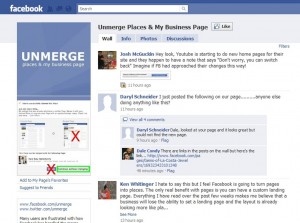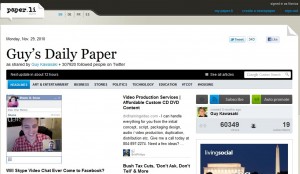“Don’t Merge Your Nonprofit Facebook Page with Places Page,” warns the heading of an interesting Dec. 17 guest post on Beth’s Blog.
The post, by Ivan Boothe, explains if your organization accepts Facebook’s invitation to claim your Facebook Places geolocation page, you’ll lose your ability to specify a default landing tab on your regular Facebook page. That means all the time and money you put into creating a beautiful custom landing tab will go to waste.
Since at the moment this only appears to affect Places pages, and any existing Pages merged with a Place, it’s unclear whether this is simply a roll-out bug or something more long-term. … But given that Facebook first removed the default landing tab a few months ago, reinstating it after an uproar but only temporarily my guess is that this is the direction of things on Facebook.
 This is serious problem. Default landing tabs are a powerful way to convert Facebook page visitors into fans. Instead of new visitors simply being dumped on your Wall, you can create a custom landing tab, welcoming new visitors, introducing them to your organization, and encouraging them to “like” it.
This is serious problem. Default landing tabs are a powerful way to convert Facebook page visitors into fans. Instead of new visitors simply being dumped on your Wall, you can create a custom landing tab, welcoming new visitors, introducing them to your organization, and encouraging them to “like” it.
Facebook offers no unmerge option, so if you are unhappy with the results, you have no choice but to suffer or abandon your merged Page and start from scratch. You can also join more han 800 organizations—and growing—on the “Unmerge Places & My Business Page” Facebook page.




